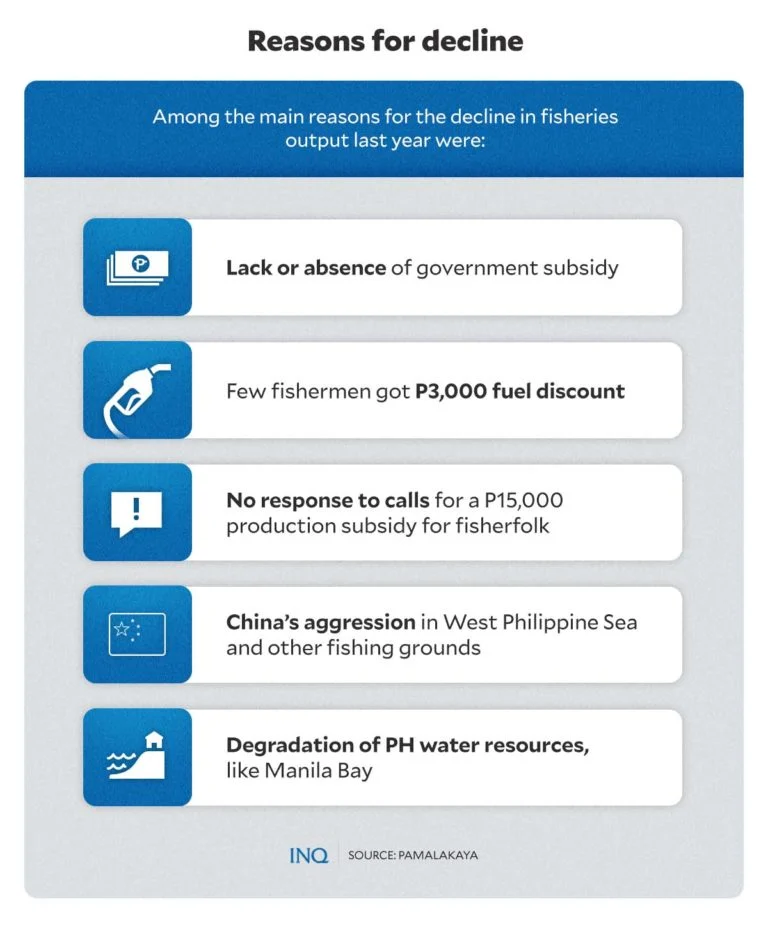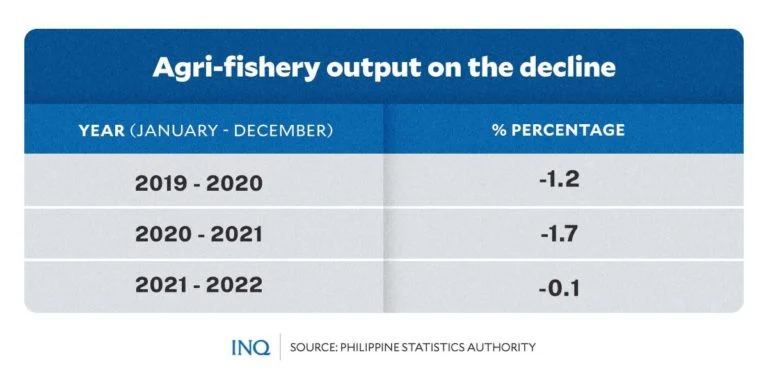January 31, 2023
MANILA, Philippines — The all-year-round decline in fisheries production in 2022 and three straight years of agri-fisheries losses should alarm the current administration, according to a progressive fisherfolk group.
Fisherfolk organization Pambansang Lakas ng Kilusang Mamamalakaya ng Pilipinas (Pamalakaya), citing data from the Philippine Statistics Authority (PSA), showed that agri-fisheries production went down by 1 percent in the fourth quarter of 2022 and overall contracted by 0.1 percent that year.

GRAPHIC Ed Lustan
The decline in agri-fisheries output last year marked the third straight year of contraction, following the -1.7 percent and -1.2 percent in 2021 and 2020.
“This is an indication that the government has neglected the agriculture and fisheries sector in the country,” said Pamalakaya National Spokesperson Ronnel Arambulo in a statement.
“The successive year-on-year decline in production in agriculture and fisheries is very worrisome. This will explain why the price of basic foods in the country is also increasing,” Arambulo added.
Fisheries output dive
Last year’s most significant drop in fisheries output was around 6.6 percent, recorded during the fourth quarter or from October to December.
Fishery production fell by 5.8 percent during the first quarter, 2.4 percent in the second quarter, and 5.2 percent for the third quarter of that same period.

GRAPHIC Ed Lustan
The PSA noted double-digit declines in the production of the following species last year:
.Mudcrab (Alimango): -28.7 percent
.Blue Crab (Alimasag): -19.7 percent
.Tiger Prawn (Sugpo): -19.6 percent
.Indian Mackerel (Alumahan): -19.2 percent
.Slipmouth (Sapsap): -15.1 percent
.Milkfish (Bangus): -12.6 percent
.Cavalla (Talakitok): -12.1 percent
.Bali Sardinella (Tamban): -12.1 percent
.Tilapia: -10.7 percent
Decreases were also recorded for the following species:
.Frigate Tuna (Tulingan): -9.7 percent
.Grouper (Lapu-lapu): -8.5 percent
.Threadfin Bream (Bisugo): -3.8 percent
.Roundscad (Galunggong): -3.8 percent
“This is not just data or numbers but the actual situation of farmers and fishermen who are simultaneously suffering from burdensome programs and government negligence,” Arambulo said.
The main culprits
According to Pamalakaya, one of the key factors behind the decline in production of the agriculture and fisheries sector was the consecutive increases in oil prices last year, which limited the hours and days of fishing by small fisherfolk.


